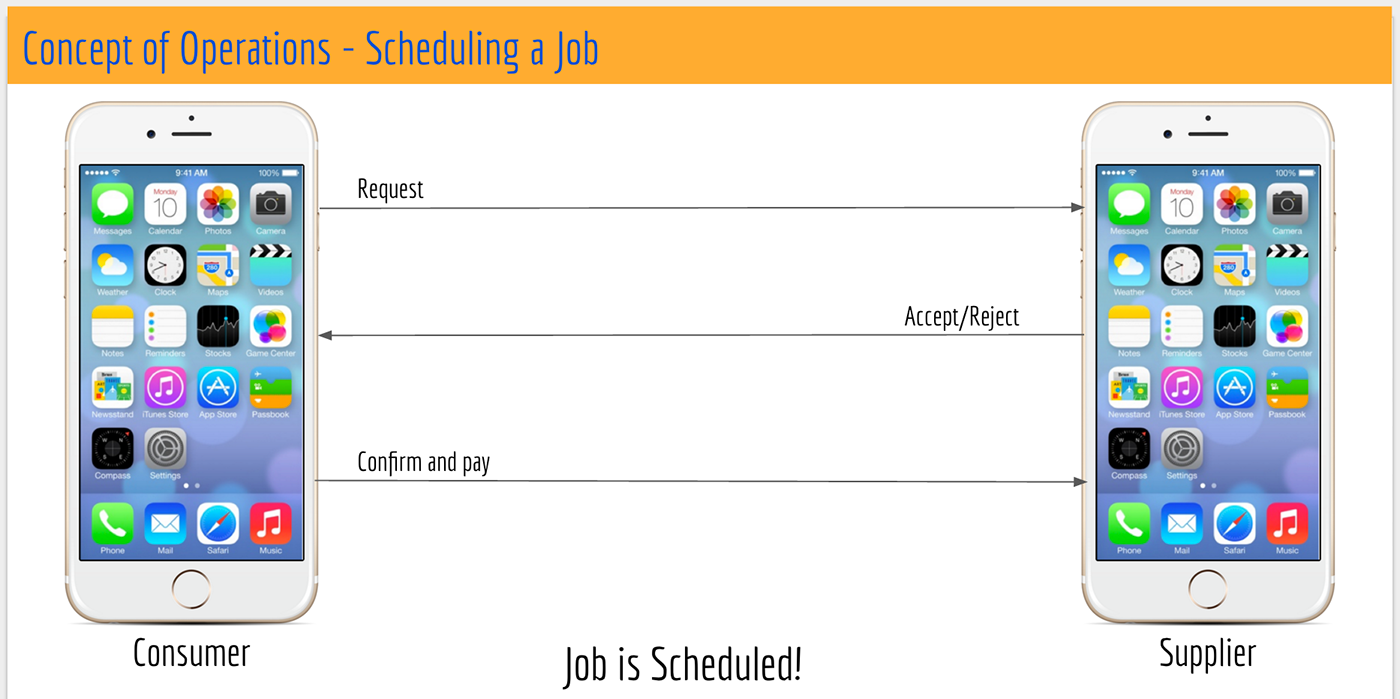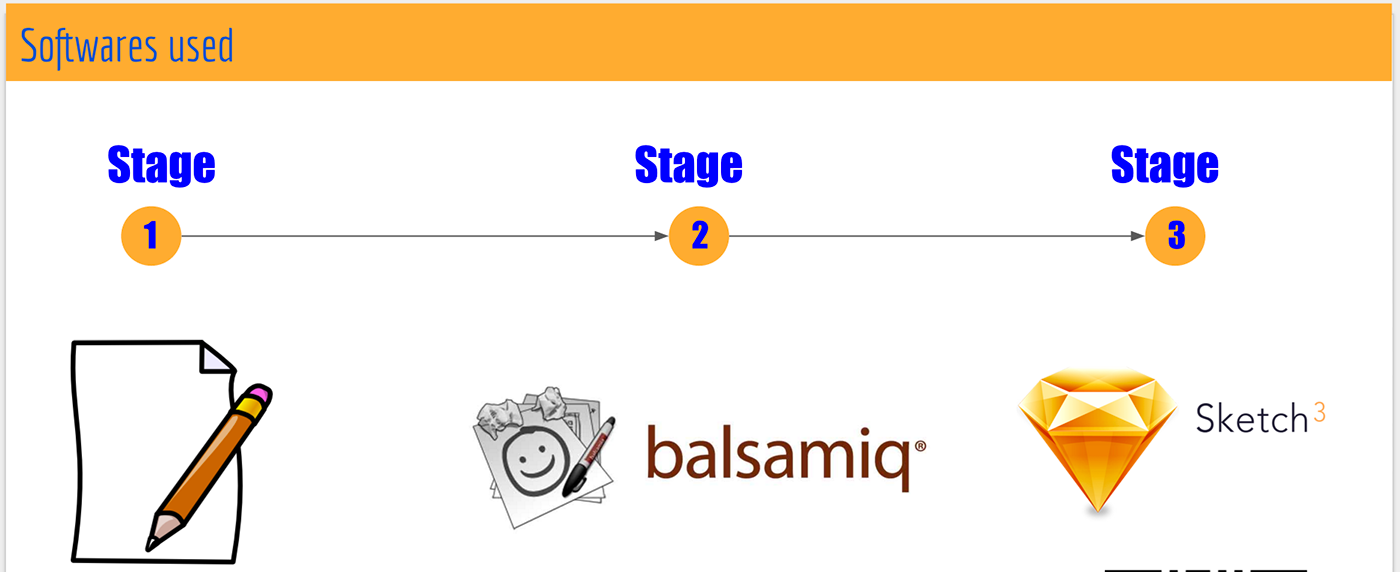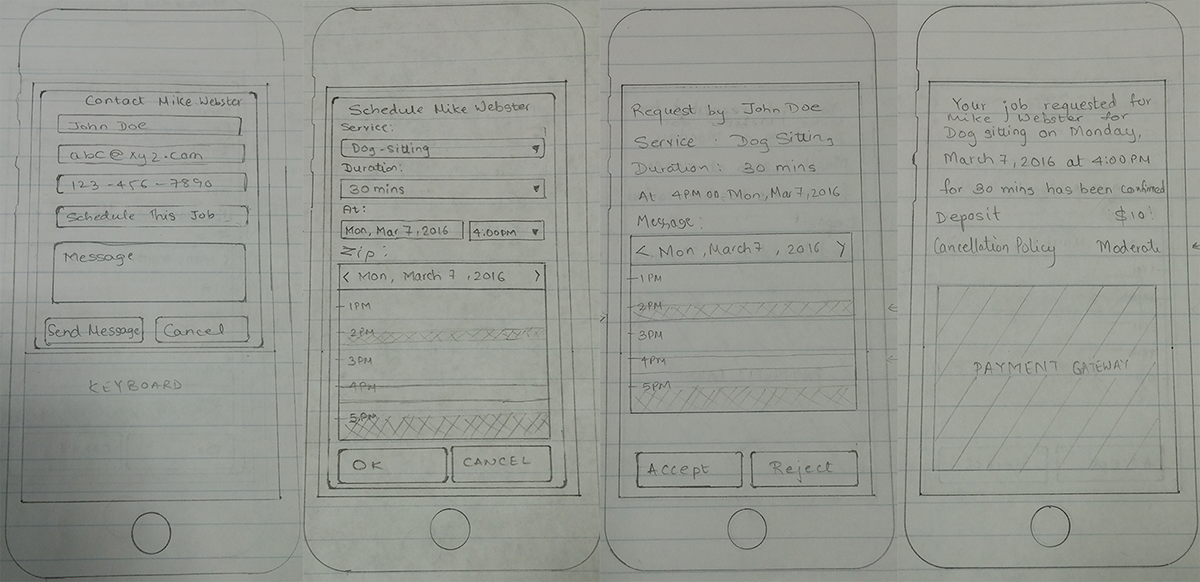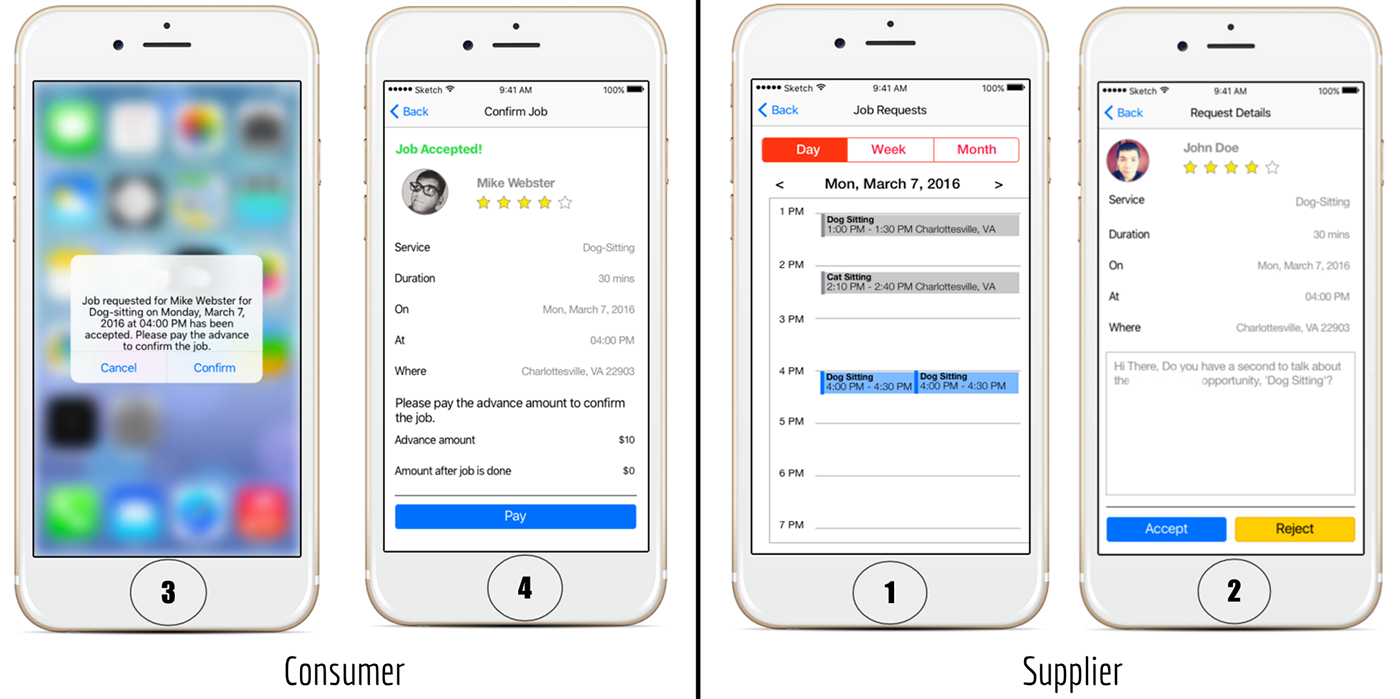The Problem
An existing mobile application allows a user (consumer) to search for a service and contact the supplier of the service through the application in order to get the service. The current application only allows basic information exchange. The consumer and supplier talk back and forth to schedule the job. We were given the task of designing a scheduling functionality for the application, to simplify this back and forth communication.
Objective
The objective of this project was to create a scheduling platform for people who supply and attain access to their services.
Highlights of the Design:
- Built on the existing design and functionality of the mobile application
- Scheduling is conducted via request-accept-confirm methodology
- Scheduling can be done for one time slot, after the supplier is selected
- The scheduled slot can be rescheduled with a request-accept methodology
- Supplier has to set up his/her calendar to allow scheduling for the job offering
- For easy calendar setup, options such as set up for ‘1 week’, ‘2 weeks’, ‘1 month’ are provided
- Supplier can turn on/off scheduling option based on his/her availability or workload
- Calendar syncs with Google/Apple/Outlook calendar and automatically blocks unavailable times
- Any rescheduling request or rejection is always coupled with a message to avoid any down-rating and maintains the current method of communication of the app



After deciding on the concept of operations, we made mockups on paper. This gave us a very good and quick sense of how to arrange the elements and the flow of the app. Here are a few artifacts from stage 1 of the design process.

The paper mockups made the concept of operations clearer. We assessed the number of steps/screens that would be required and minimized them. For the next stage, we created wireframes in Balsamiq. We also added interaction links in Balsamiq. Here are a few screenshots of the Balsamiq wireframes.

The final stage of the design included transferring the wireframes into screens using Sketch 3.0. The final screens were then converted into a prototype by adding transitions and interactions. Here are a few screenshots of the final design.
1. Calendar Setup

2. Schedule a job

3. Confirm a job (Accept)

4. Reject a Job

5. Reschedule a Job

At any point in time, the supplier can request to change the schedule for working to the consumer. Upon receiving the request, the consumer can accept or reject it.
6. My Jobs Calendar view

